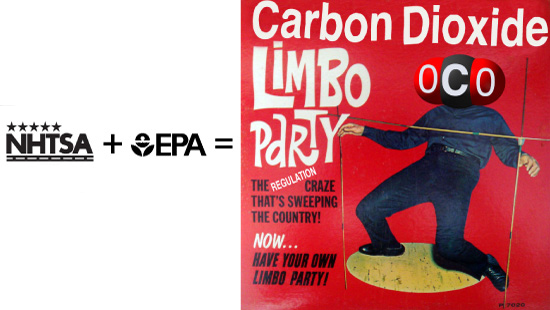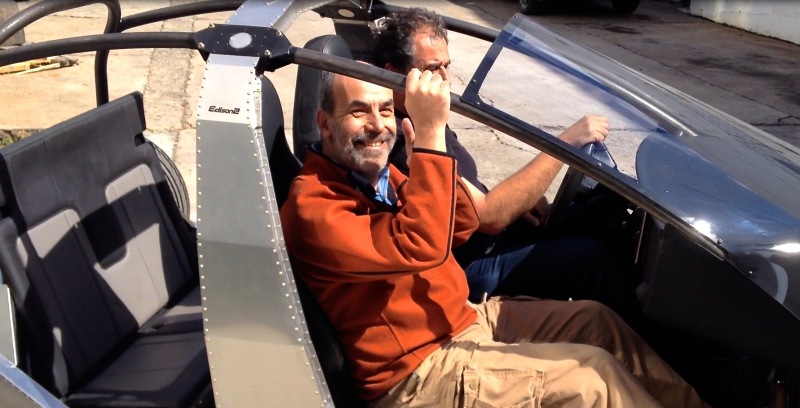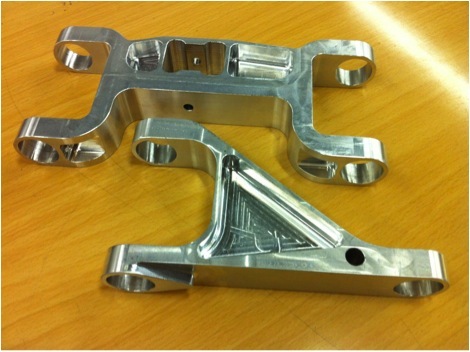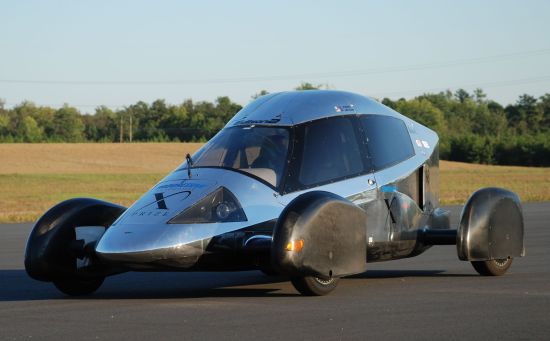
Welcome to the first in a series about the EPA's new CO2 regulations. Our first entry is a compelling overview and expose of powerful new regulations the media is not covering. In the coming months we'll explore why these regulations matter. And we'll reveal, innovation by innovation, why Edison2's game-changing solutions are the best fit for this regulatory vision of an efficient, planet-friendly transportation future. Please join the conversation and enjoy our new series!
CO2...This is important.
#1. Overview
Many are not aware of this, but the United States had two Super Bowls in February 2012: The first, Giants vs. Patriots, lasted three hours. The Giants prevailed. The second, 100 industry giants and fifteen states vs. the Environmental Protection Agency (EPA), lasted two days. This epic showdown combined twenty-six appeals from a deep bench of lawyers over ten pages long. [1]
The giants did not prevail. In June 2012, the EPA's authority to regulate greenhouse gas (GHG) emissions from mobile sources – the cars we drive – was upheld by the DC Court of Appeals. On October 15, the EPA and the National Highway Transportation Safety Administration (NHTSA) issued their joint final rule. [2] In short, mobile source CO2 regulation, AKA The Tailpipe Rule, is here to stay.
Starting in 2017, if automakers fail to meet EPA limits for CO2 emissions four years in a row, the EPA now has the power to make it illegal for manufacturers to sell their vehicles with the highest CO2 tailpipe emissions. [3] [4] In other words, the heaviest, sportiest, most luxurious vehicles – iconic brands like Mercedes 500, Camaro SS and Range Rover – could be banned from entering commerce in the United States. [5]
In 2009, a presidential memorandum directed the EPA to coordinate with NHTSA on CO2 and MPG requirements. This convergence of regulation was created to help the United States address oil consumption and climate change. [6]
What this means is automakers are now in a regulatory vice that closes more each year; CO2 limits get lower and MPG requirements get higher, and the rate of change is increasing. MPG requirements that went up 9.5 MPG in 31 years [7] will now shoot up twice that amount in less than half the time. [8] This is the 2025, 54.5 MPG requirement the media is covering.
What isn’t being covered are the new CO2 limits and EPA’s power to remove cars from commerce. Automakers taking this threat seriously are scrambling for solutions in technologies they or their partners own. The EPA combined these technologies into 47,000 unique packages and ran analysis to determine which were most effective at reducing vehicle CO2 emissions. [9]
There are two problems with this approach: physics and cost. The decades-old chassis and suspension design (architecture) in our modern cars is inefficient and heavy. As efficiency requirements go up, physics makes it increasingly difficult to meet those requirements with incremental solutions, and automakers end up throwing significant capital at inefficient architecture. Stacking incremental technologies like advanced downsized turbo diesel and gasoline engines, gasoline direct-injection and start-stop, and eventually more effective but pricy Plug-in and electric drivetrains and batteries, exotic materials and more onto legacy architecture...it starts to resemble lipstick on a pig - expensive lipstick.
If automakers succeed in complying without addressing inefficient architecture, the lipstick-on-a-pig approach could make cars bought by average consumers expensive enough to create real problems. [10] Affordable cars could shrink to unsafe sizes; consumers could shun compliance cars in favor of cheaper gasoline-only cars or pre-regulation cars; CO2 compliance would fail as a result; and the EPA would ban well-known vehicles. Some of this near-future exists today in the low sales of high-tech compliant cars and the new automakers who are either struggling or extinct.
The silver lining to this is scattered throughout the EPA/NHTSA final rule, studies that show Edison2's credo of lower mass and lower aerodynamic drag is effective, and affordable. [11] [12] [13]
Together, Edison2's patented in-wheel suspension and new chassis design offer a true leap in automotive efficiency and a viable solution to the regulatory vice. Our vehicle is compliant beyond 2025 regulations today, and is designed from the ground up to be economically feasible for automakers and consumers. This is because our platform innovations enable expensive drivetrains, batteries, components, total vehicle parts and material input to be downsized to cost-efficient levels. We accomplish this without costly, exotic materials, and without sacrificing the performance, ride, safety and handling that consumers are accustomed to. Efficient architecture makes all the difference.
Rapidly implementing solutions like Edison2's is critical if automakers hope to create affordable, desirable passenger vehicles that keep pace with increasingly stringent CO2 and MPG requirements.
------------------------------------------
Reference help: The links beside EPA/NHTSA require copy/pasting the link into a new window and take up to 10 seconds to load the page and cue to the correct paragraph. Clicking or right-clicking opens the page, but it can cue to the wrong paragraph.
[1] USCA Case #09-1322 http://bit.ly/TZNo6T
[2] EPA Regulations and Standards: Light Duty http://1.usa.gov/RrJlha
[3] EPA/NHTSA final rule http://1.usa.gov/TSrXb7
[4] EPA/NHTSA final rule http://1.usa.gov/W3sGVI
[5] EPA/NHTSA final rule http://1.usa.gov/STz3LT and http://1.usa.gov/S5PINZ
[6] Whitehouse press release http://1.usa.gov/n69isg
[7] NHTSA “Summary of Fuel Economy Performance” (PDF download, pg 3) http://1.usa.gov/qcdF35
[8] Center for Climate and Energy Solutions http://bit.ly/R64pPI
[9] EPA/NHTSA Final Rule http://1.usa.gov/Yndcjq
[10] NADA study, pg 5, paragraph 2 http://bit.ly/HxHQtF
[11] EPA/NHTSA Final Rule, phase 2 Toyota Venza mass reduction study http://1.usa.gov/11vpYh0
[12] EPA/NHTSA Final Rule, conclusions of current mass reduction studies http://1.usa.gov/13w8Bvh
[13] EPA/NHTSA Final Rule, see bottom of CO2 reducing technologies chart http://1.usa.gov/WjvbmM WR20% = 20% weight reduction, Aero2 = aerodynamic treatments


 Saturday, March 30, 2013 at 04:34PM
Saturday, March 30, 2013 at 04:34PM



